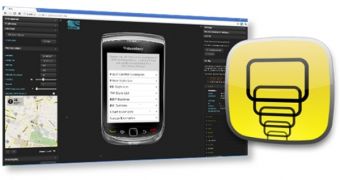Canadian mobile phone maker Research In Motion has just announced a series of new features available for application developers who take advantage of its BlackBerry WebWorks tools for the building of applications for the BlackBerry smartphones.
In a recent post on the BlackBerry Developer's Blog, the company announced that the new updates to the said tools involve a Ripple emulator coming from the tinyHippos, along with updated API Reference.
“We’re happy to announce that shortly after joining Research In Motion (RIM), the tinyHippos crew have an update available for the Ripple emulator BETA program, which now includes support for most of the BlackBerry WebWorks APIs,” the blog p0ost reads.
“It also provides skins for the BlackBerry Bold series of smartphones, the BlackBerry Torch 9800 smartphone and the BlackBerry PlayBook tablet.”
With the new beta, developers would be able to place BlackBerry WebWorks apps on a local web server, then point the Ripple emulator at their website, and test the software without having to compile or load it onto a simulator.
The final testing is still recommended to take place in a simulator, or on live devices, to ensure that all features work as planned before releasing it to end-users.
“This update is just one step forward towards how the Ripple emulator will evolve over the course of this year. Stay tuned for more updates on the direction of the Ripple tooling along with further steps towards bringing the smartphone and BlackBerry Tablet OS BlackBerry WebWorks SDKs together,” RIM notes.
Other enhancements brought to the BlackBerry WebWorks platformincludes an updated BlackBerry WebWorks API Reference, which should bring the development of apps for BlackBerry smartphones and BlackBerry PlayBook tablet OS a little closer.
“We have now released an updated version of the BlackBerry WebWorks API Reference that brings both the smartphone and tablet OS APIs together in one consolidated reference guide,” the company announced.
Devs would find documentation for all the HTML5 and web application APIs in the reference guide, as well as new documentation features, such as including filters based on OS version, table of contents and object listing views.
There is also an updated look and feel, as well as tabling tools showing which APIs are supported on which platform.
“This new API documentation is also available for community collaboration on github.com/blackberry along with the project’s roadmap,” RIM concludes.

 14 DAY TRIAL //
14 DAY TRIAL //